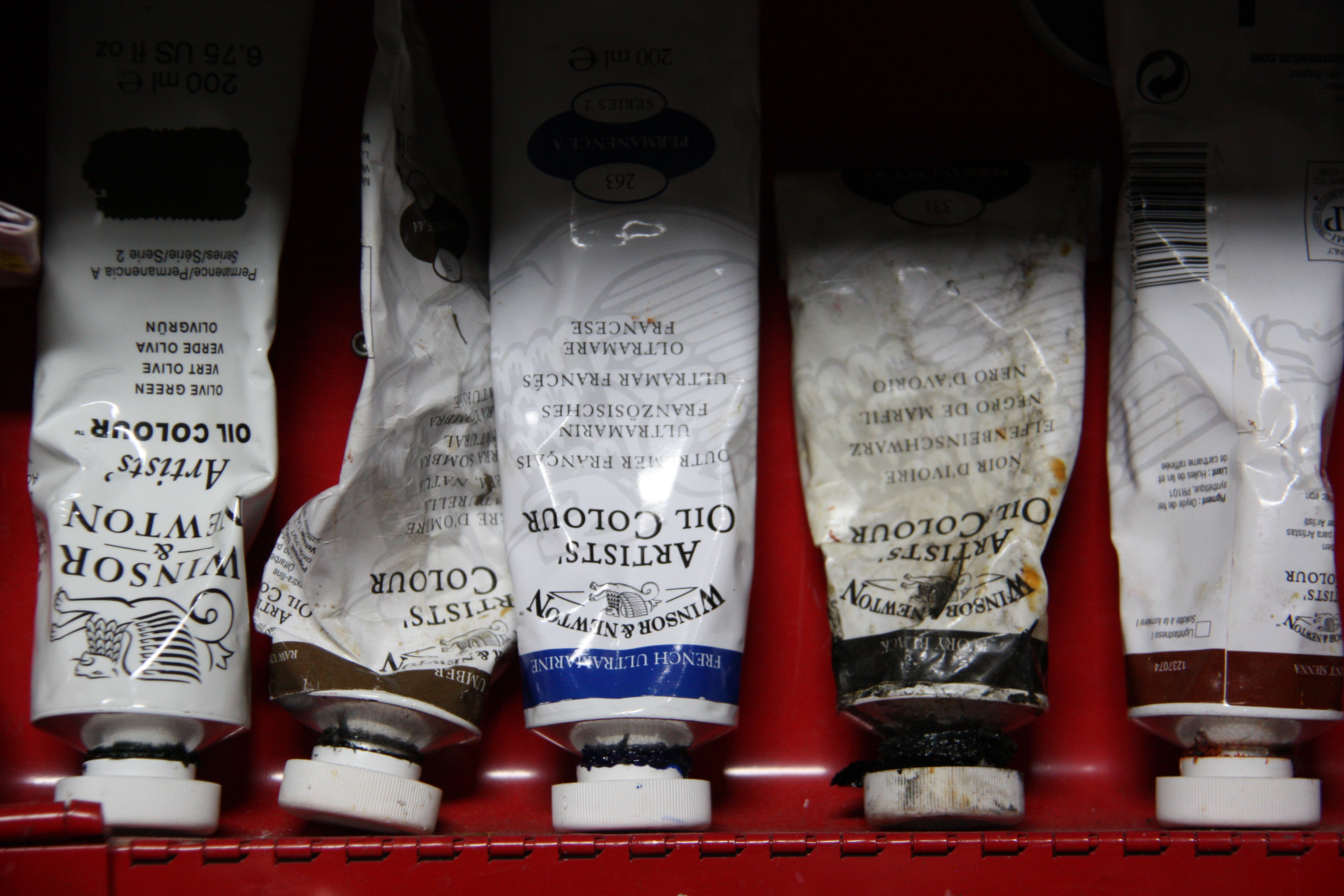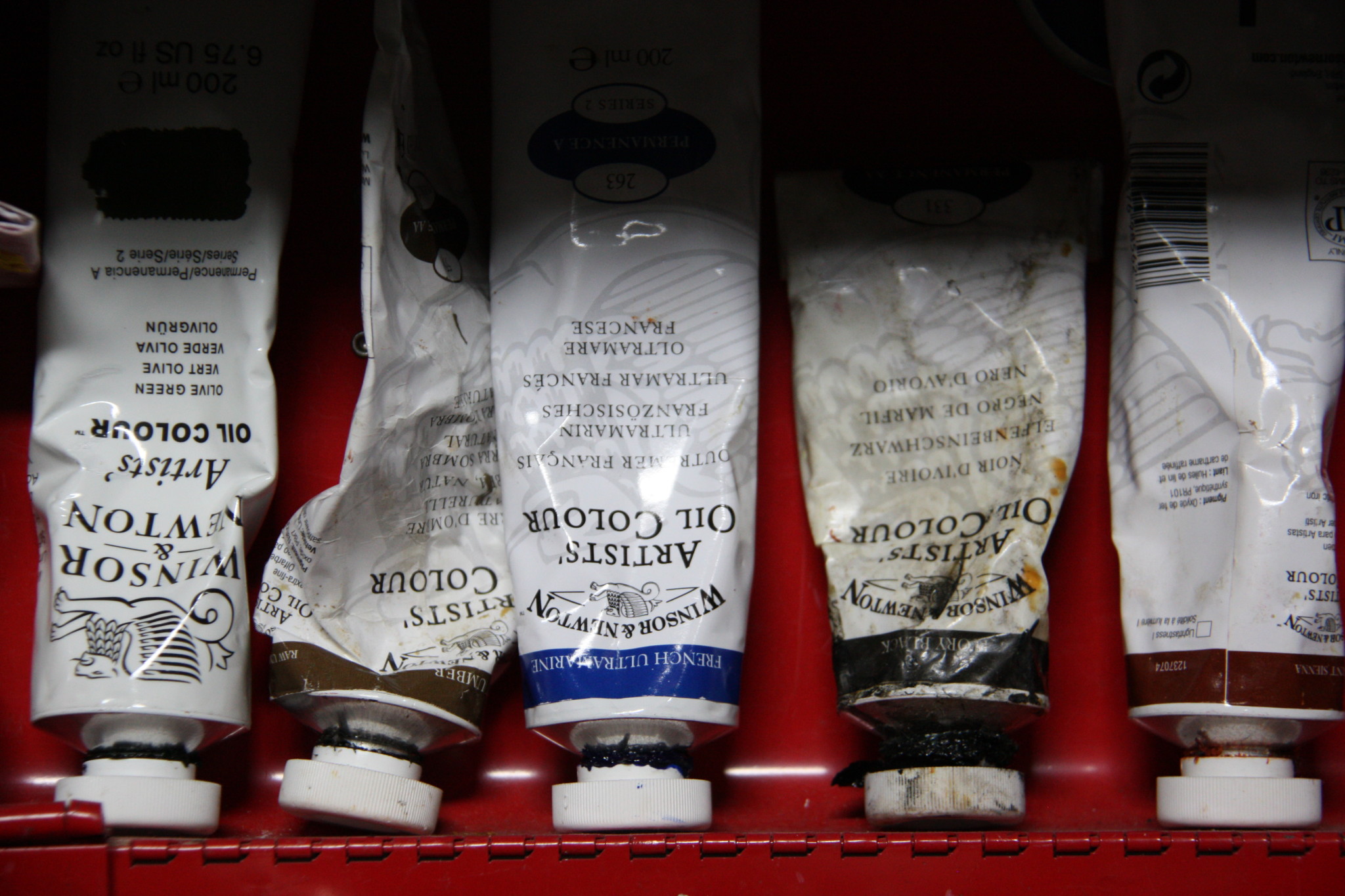 In this short post, I am going to talk about the actual materials that I frequently use to create my art. These materials are by no means set in stone, but what I can speak to the most to is oil paint and the materials that go with it. With over 20,000 hours invested in oil painting and art, I truly believe that you get what you pay for with materials. The best companies make the best products which lend themselves to the best possible outcome in your art. For instance, an inexpensive brush may look like a good deal as it feels nice in your hand in the store, it may look similar to the higher priced models as well as paint well for their first use, but the second use of the brush is considerably different. Hairs stick out in all sorts of unruly positions and by the tenth use, the brush might literally break in your hand. Spend roughly five times or more on a higher quality brush and you’ll have years of continuous, consistent use. This post however is not about brushes, it’s about paint, specifically oil paint.
In this short post, I am going to talk about the actual materials that I frequently use to create my art. These materials are by no means set in stone, but what I can speak to the most to is oil paint and the materials that go with it. With over 20,000 hours invested in oil painting and art, I truly believe that you get what you pay for with materials. The best companies make the best products which lend themselves to the best possible outcome in your art. For instance, an inexpensive brush may look like a good deal as it feels nice in your hand in the store, it may look similar to the higher priced models as well as paint well for their first use, but the second use of the brush is considerably different. Hairs stick out in all sorts of unruly positions and by the tenth use, the brush might literally break in your hand. Spend roughly five times or more on a higher quality brush and you’ll have years of continuous, consistent use. This post however is not about brushes, it’s about paint, specifically oil paint.
Ideally, I would be harvesting my own raw pigments from around the world, producing my own earth-friendly linseed oil and properly mixing those every day in my studio before I paint. But, for now I purchase my paints from art supply stores and on the internet. Paint manufactures have dialed in their consistency giving us a decent piece of mind that the last tube of paint you bought will be pretty close in color intensity, chroma and mixture to the last tube of paint you bought within a brand. Certain colors will be much more expensive than others, for instance cadmium red vs. raw sienna. With a 37 ml tube of cadmium roughly costing $50, while raw sienna in the same size from the same company will be $8, this has mostly to do with the cost of the raw cadmium pigment being much higher than the earth tone pigment of sienna, both are mixed with linseed oil.
Depending on subject matter, my palette consists of around twenty colors with a warm and a cool of every color and several earth tones along with ivory black and titanium white. Once again, this is not set in stone. The specific colors that I use can change a little depending on the subject matter. I have used the colors on this palette for several years and have become deeply familiar with each of them and how they mix with one another. The moment I try to mix in a lesser brand of paints with the high quality paints, I notice a big difference right away. One of the biggest downsides of using low quality paint is needing to used a lot more of it, which is a catch 22! In this case quality does literally equal quantity. The density of pigments that are mixed into the low quality paints is much lower than in the high quality paints. Oftentimes, synthetic or “fake” pigments can be found in cheap paint to lower the overall cost or you’ll find diluted mixtures of the vehicle used or low quality linseed oil. All of this information can be found on the label of the paint tube. Often when a paint color’s name is followed by a word like “tint,” or “hue,” it means that it is not a genuine mixture of real pigment and linseed oil but rather a synthetic derivative.
Oil paint is by no means an inexpensive product so buying in bulk and waiting for sales can really make a difference. The paints that I use are from Windsor and Newton, Old Holland, Grumbacher, Rembrandt, Rublev, Sennelier and Williamsburg in no specific order. Most of the preparation of my surfaces comes from products by Golden Artist, specifically gesso and matte medium. But, that is another post all together. All of these companies have their own websites to purchase through and most can be found on the big art supply sites such as utrechtart.com and amazon.


